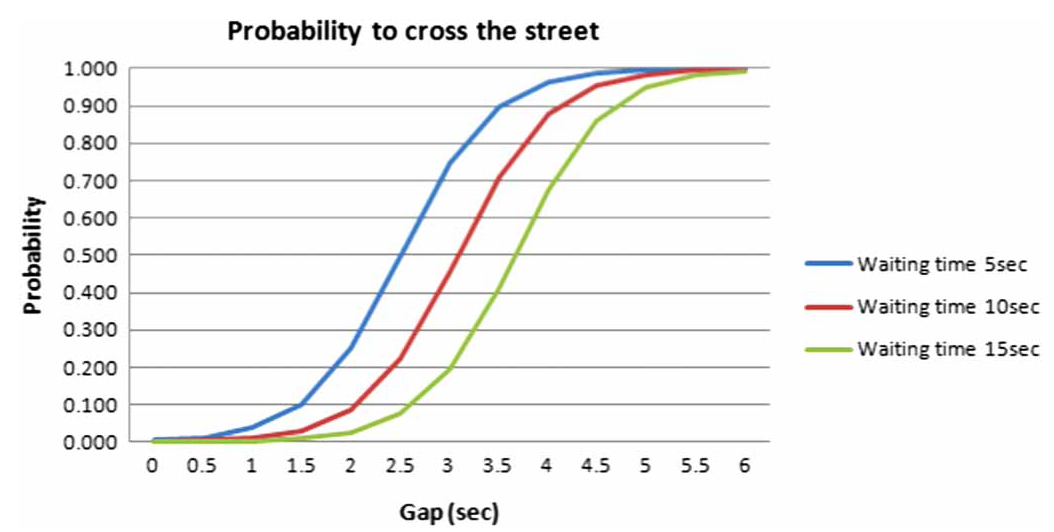
This paper investigates pedestrians’ traffic gap acceptance for mid-block street crossing in urban areas. A field survey was carried out at an uncontrolled mid-block location in Athens, Greece. Pedestrians’ decisions and traffic conditions were videotaped in terms of the size of traffic gaps rejected or accepted, waiting times and crossing attempts and vehicle speeds. A lognormal regression model was developed to examine pedestrian gap acceptance. It was found that gap acceptance was better explained by the distance from the incoming vehicle, rather than its speed. Other significant effects included illegal parking, presence of other pedestrians and incoming vehicles’ size. A binary logistic regression model was developed to examine the effect of traffic gaps and other parameters on pedestrians’ decisions to cross the street or not. The results reveal that this decision is affected by the distance from the incoming vehicles and the waiting times of pedestrians.
| ID | pj78 |
| Manuscript | |
| DOI | |
| Tags | pedestrians |







